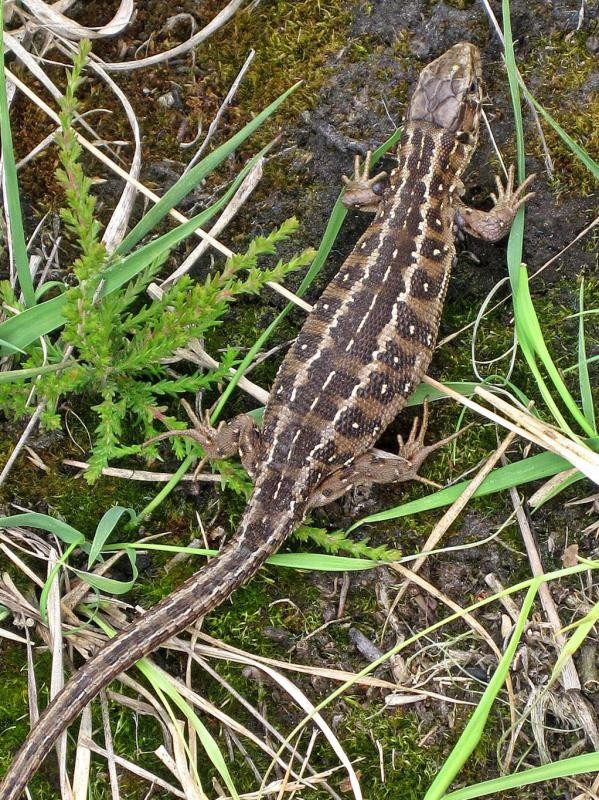Sand lizard
A species of Two-faced neusticurus Scientific name : Lacerta agilis Genus : Two-faced neusticurus
Sand lizard, A species of Two-faced neusticurus
Scientific name: Lacerta agilis
Genus: Two-faced neusticurus
Content
Description General Info
 Photo By Bj.schoenmakers , used under CC0 /Cropped and compressed from original
Photo By Bj.schoenmakers , used under CC0 /Cropped and compressed from original Description
The sand lizard (Lacerta agilis) is a lacertid lizard distributed across most of Europe and eastwards to Mongolia. It does not occur in the Iberian peninsula or European Turkey. Its distribution is often patchy.
General Info
Lifespan
5-8 years
Diet
Sand lizard's diet is substantially omnivorous. It predominantly feeds on arthropods, such as spiders, beetles, and grasshoppers. However, plant matter, including berries and leaves, forms a crucial part of their nutrition during scarcity of arthropods.
Appearance
The sand lizard is a small to medium-sized lizard, with a slender, streamlined body and smooth, scaly skin. Males are often distinct with their greenish bodies, bright spots, and red or orange underbellies, while females and juveniles are generally brown. Notably, it possesses a long, tapering tail which can be broken off as a defence mechanism.
Behavior
Sand lizard is a solitary, diurnal species, known for its basking behavior to thermoregulate. It exhibits territorial defense, often involving display postures and mouth gaping. Predominantly insectivorous, sand lizard employs a sit-and-wait hunting strategy. The species hibernates during winter months in burrows, a survival adaptation against cold climates.
Population
Stable
Scientific Classification
Phylum
Chordates Class
Reptiles Order
Lizards and snakes Family
Wall lizards Genus
Two-faced neusticurus Species
Sand lizard